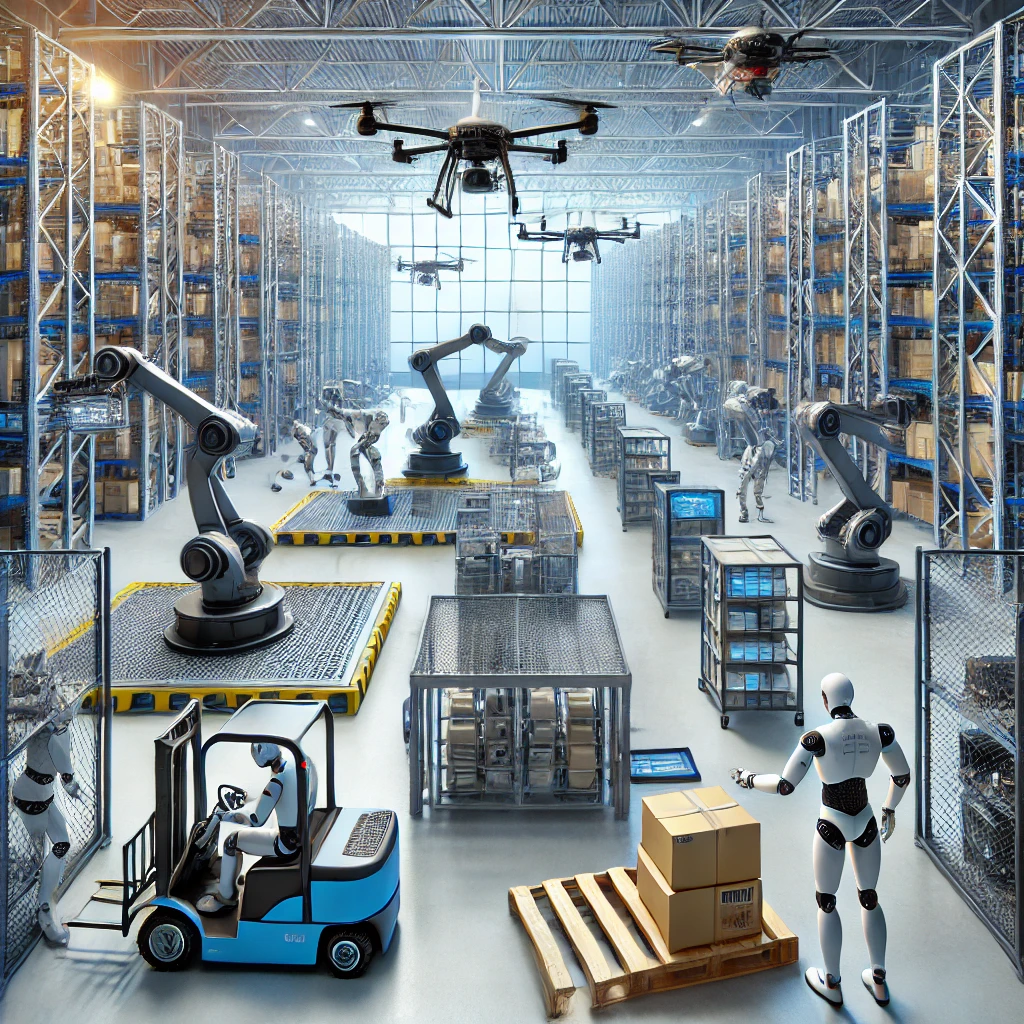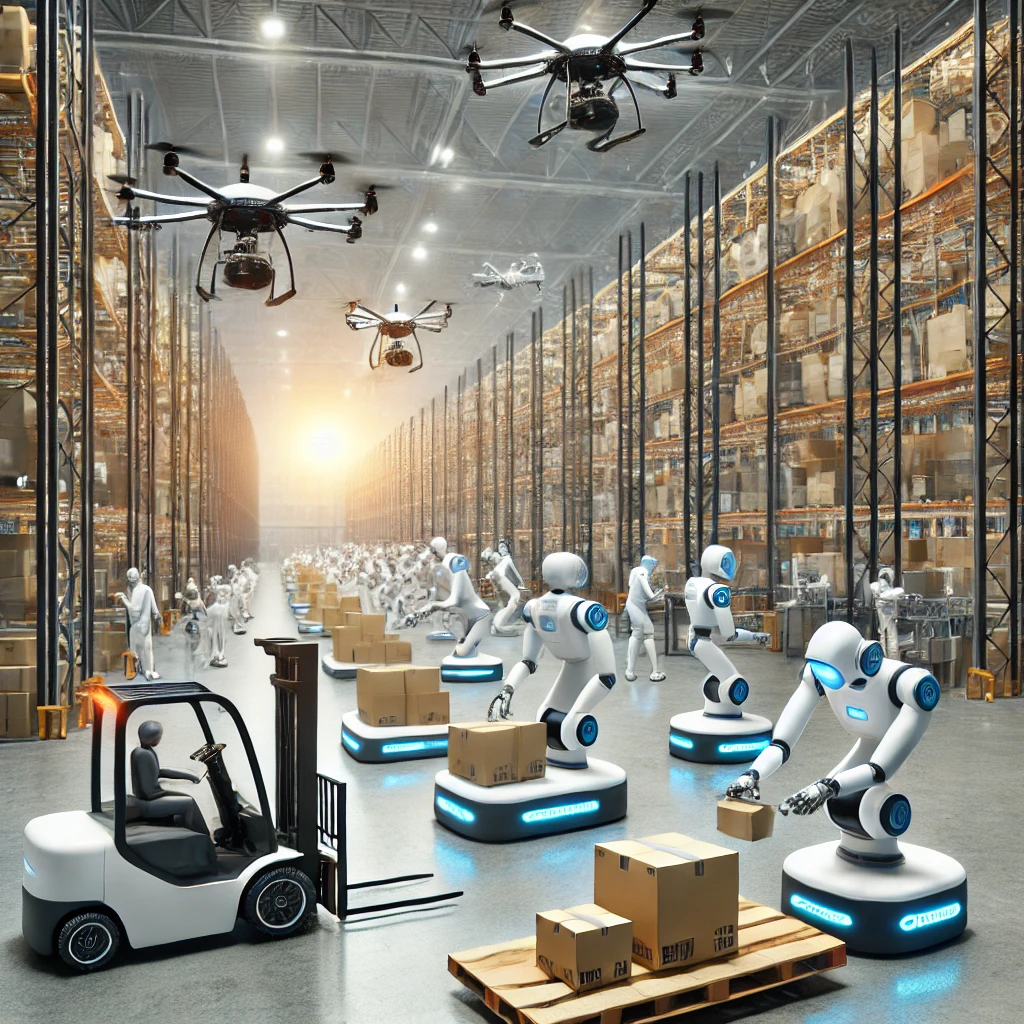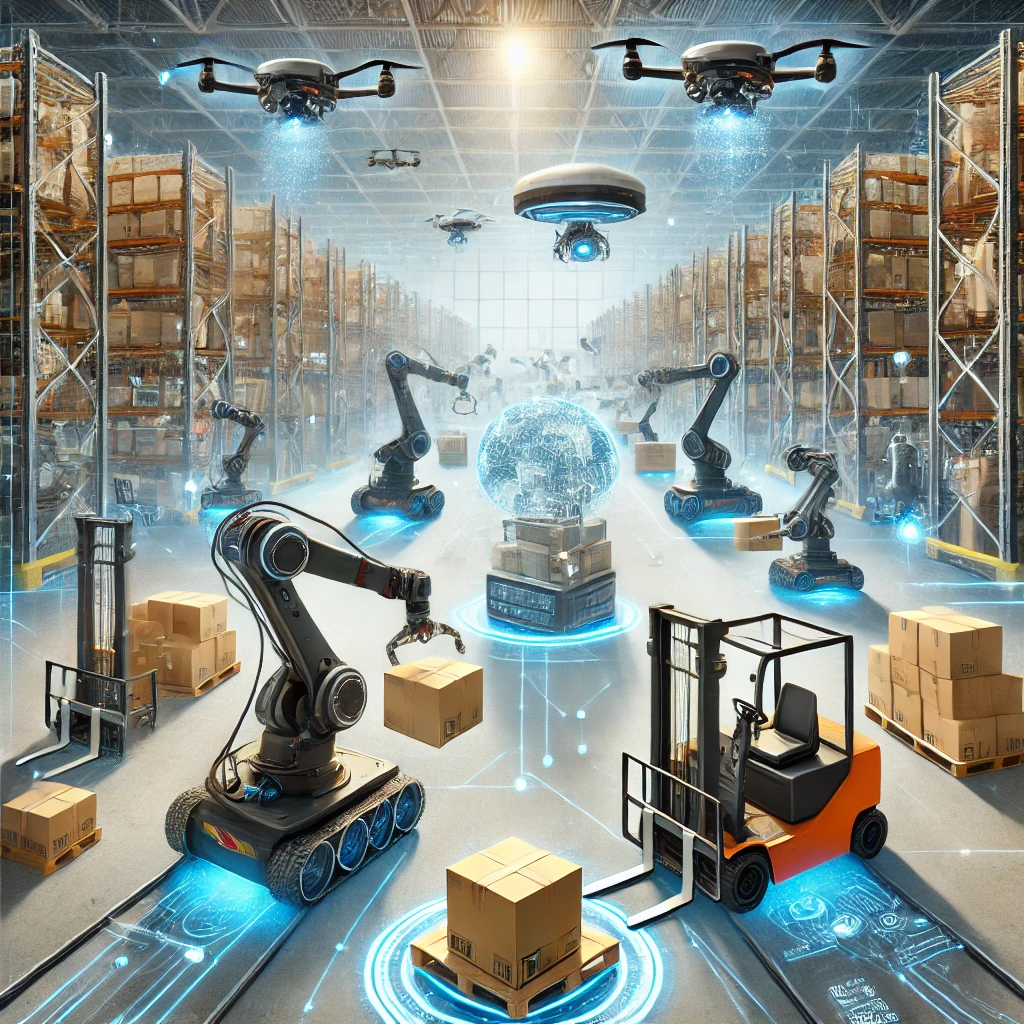Transforming Supply Chains: A Comprehensive Guide to Robotics in Logistics

What is Robotics in Logistics?
Robotics in logistics refers to the use of automated machines and systems to perform various tasks within the supply chain. Key applications include:
- Automated Storage and Retrieval Systems (AS/RS)
- Robotic picking and packing
- Autonomous Mobile Robots (AMRs) for material handling
- Collaborative robots (cobots) working alongside humans
- Automated Guided Vehicles (AGVs) for transportation
- Drones for inventory management and delivery
- Robotic sorting systems
- Automated palletizing and depalletizing
- Exoskeletons for worker assistance
- AI-powered robots for quality control and inspection
These robotic systems are designed to enhance speed, accuracy, and efficiency in logistics operations while reducing labor costs and improving safety.

Benefits of Implementing Robotics in Logistics
- Increased Efficiency: Robots can work 24/7 without fatigue, significantly boosting productivity.
- Enhanced Accuracy: Robotic systems minimize human errors in picking, packing, and sorting.
- Improved Safety: Robots can handle hazardous or physically demanding tasks, reducing workplace injuries.
- Cost Reduction: While initial investment is high, long-term labor and operational costs are reduced.
- Scalability: Robotic systems can easily adapt to fluctuations in demand and business growth.
- Data-Driven Insights: Robots generate valuable data for analytics and continuous improvement.
- Space Optimization: Some robotic systems allow for more compact storage and efficient use of warehouse space.
- Faster Order Fulfillment: Automated systems can significantly reduce order processing and fulfillment times.
Key Applications of Robotics in Logistics
- Warehouse Automation:
- AS/RS for high-density storage and retrieval
- AMRs for flexible material transport
- Robotic picking systems for order fulfillment
- Sorting and Distribution:
- Automated sorters for package routing
- Robotic systems for parcel handling and sorting
- Transportation:
- AGVs for intra-facility transport
- Autonomous trucks for long-haul transportation
- Last-mile delivery robots and drones
- Packaging and Palletizing:
- Robotic systems for custom packaging
- Automated palletizers for efficient load building
- Inventory Management:
- Drone systems for automated inventory counts
- RFID-equipped robots for real-time inventory tracking
- Quality Control:
- AI-powered robots for product inspection
- Automated systems for damage detection

Implementing Robotics in Logistics: Best Practices
- Conduct a Thorough Assessment: Evaluate your current operations to identify areas where robotics can provide the most value.
- Start with a Clear Strategy: Develop a comprehensive plan aligned with your business objectives and future growth projections.
- Choose the Right Technologies: Select robotic solutions that best fit your specific needs and integrate well with existing systems.
- Implement in Phases: Begin with pilot projects and gradually expand robotic implementation across your operations.
- Invest in Staff Training: Provide comprehensive training to ensure your team can effectively work with and maintain robotic systems.
- Ensure Scalability: Choose solutions that can grow and adapt to your changing business needs.
- Prioritize Integration: Ensure seamless integration between robotic systems and your existing WMS or ERP.
- Focus on Data Analytics: Leverage the data generated by robotic systems to continually optimize operations.
- Plan for Maintenance: Develop a robust maintenance strategy to ensure the longevity and reliability of robotic systems.
- Address Change Management: Prepare your workforce for the integration of robotics, emphasizing how it will support rather than replace human workers.

Challenges in Implementing Robotics in Logistics
While robotics offers numerous benefits, it’s important to be aware of potential challenges:
- High initial investment costs
- Complexity of integration with existing systems
- Need for specialized skills to operate and maintain robotic systems
- Potential resistance from workforce
- Cybersecurity concerns with increased connectivity
- Adapting to rapidly evolving robotics technologies
Careful planning and a phased implementation approach can help mitigate these challenges.
Emerging Trends in Robotics for Logistics
As technology continues to advance, new trends are shaping the future of robotics in logistics:
- AI and machine learning for more adaptive and intelligent robots
- Swarm robotics for coordinated task completion
- Soft robotics for handling delicate items
- 5G connectivity for improved robot communication and control
- Edge computing for faster data processing in robotic systems
- Sustainable robotics solutions to reduce energy consumption
Staying informed about these trends can help you make forward-thinking decisions in your robotics strategy.
Conclusion
Robotics in logistics is no longer a futuristic concept but a present reality that is reshaping the industry. While the implementation of robotics presents challenges, the potential benefits in terms of efficiency, accuracy, and competitiveness are substantial. By carefully planning your robotics strategy and choosing the right technologies, you can position your logistics operations at the forefront of this technological revolution.
For businesses looking to revolutionize their logistics operations with robotics, Linbis logistics software offers comprehensive solutions for managing and optimizing robotic systems. From seamless integration with various robotic platforms to advanced analytics for performance optimization, Linbis empowers businesses of all sizes to harness the full potential of robotics in their logistics operations. Experience the future of logistics with Linbis’s cutting-edge robotics management solutions.
